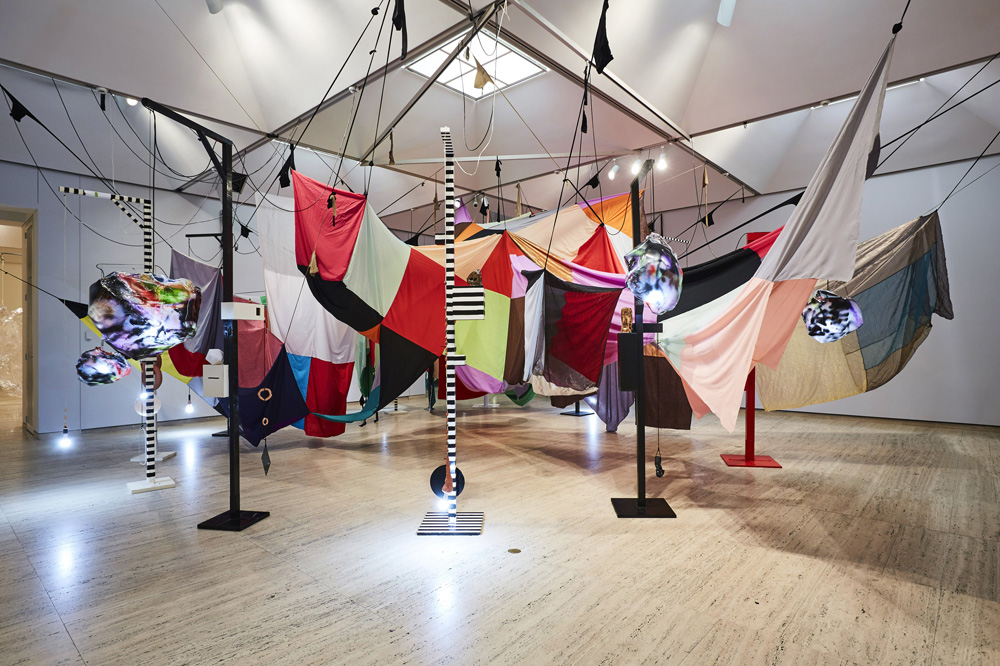A shape of thought

By Naomi Riddle
12 October, 2017
‘Please do not touch’ announces the forthright sign, standing to attention at the entrance of Mikala Dwyer’s exhibition A shape of thought. In the gallery beyond lies a smorgasbord of options for the unfettered hand: a collection of copper pipe elbows, stones, coins, sunshine yellow fabric; steel and aluminium and plastic sculptures that have been stretched, pushed or contorted into geometric shapes. The indentations of invisible fingers in one clay work feel almost like a tease as a little girl and I both eye off a foggy blue-green marble. Our arms remain dutifully by our sides.
In a nod to the legacies of DADA and surrealism, the new and recent works in A shape of thought play with our relationship to objects. Dwyer invites you to experience that satisfying moment of secret glee when you just know the shape, weight, and feel of a thing solely from looking at it, even if you long to touch it: the slanting edge on a piece of Perspex, a polished steel loop, the stretched seam of a stocking.
For ‘Divisions and Subtractions’ (2017), Dwyer has placed a series of sculptures (several made by a community of artists who worked with her on the piece) in a closed circle. Do you do a lap outside the ring or awkwardly shuffle in between the works and stand in the centre? Inside the installation your entire perspective shifts: you become a sneaky interloper glimpsing the private conversations and secret sympathies flying from one object to the next.
But for all the clashes and chaotic encounters between texture and colour, for all the times it feels like Dwyer has pushed a material to the edge of its limits and pulled back just before it falls over, there’s still a sense of gentleness, a quiet type of inquisitiveness.
Much of this has to do with the way many of the objects have been suspended – how vulnerable something becomes when it’s levitating only a foot, often less, from the ground. There’s also room to smile – whether it’s at the discovery of a McAllister whiskey bottle with just a tipple removed from the top, or in the realization that a painted bed frame is chocked up by two kitschy statues of the Virgin Mary. It is generous and unashamed in its delight.
Across all of Dwyer’s installations there’s an abundance of hoops, circles and loops; a series of cavities and voids that work to create a form of negative space. The whole time I thought about air, the way it rustled around each object even if you couldn’t feel it: how sometimes it was funnelled through a confined space before being propelled right out again: the way each room seemed to expand and contract. Leaving via the escalator I noticed that one of the many zero-shaped balloons in Dwyer’s ‘The Silvering’ (2017) was sitting slightly lower than the rest. Having lost a little helium, it was beginning to sag. And just as I had wanted to pocket that cloud-soaked marble, I was desperate to hear the metallic crinkly sound of the balloon falling onto the mylar sheet below. But like many of the objects and materials in A shape of thought, the balloon had paused on a precarious threshold, wavering on the line between softness and a sharpened edge, pondering whether to remain taught or to give way to slackness.